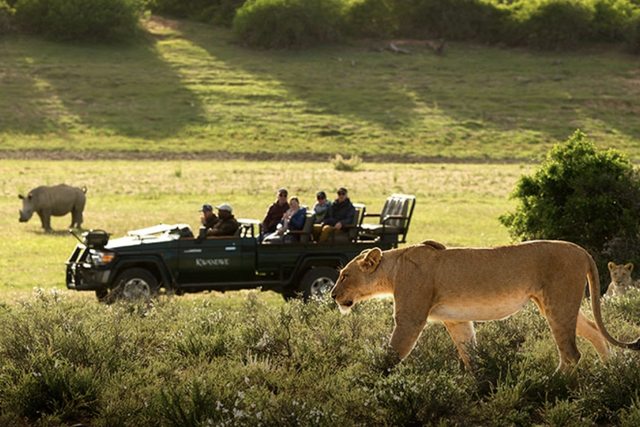Tsundzukani Whati: a journey from GWF student to wildlife conservationist
Age-old knowledge about plants, animals and insects was once common before modernised living distanced many of us from nature.
Information about flora and fauna has now become such a specialised skill that it is being leveraged by young professionals such Tsundzukani Whati, a tracker at Londolozi Game Reserve, who shares her profound understanding of natural environments with tourists seeking safari experiences.

A graduate of Good Work Foundation’s (GWF) Conservation Academy, Whati guides visitors through the serenity of the South African wilderness, reconnecting them with Mother Nature.
Her journey began in the small Mpumalanga village of Dumphries, where she grew up looking after her father’s cattle. Spending all that time in nature, which included setting up bird traps and growing plants for sustenance, was instrumental in preparing her for a future in conservation.
However, it wasn’t until she heard about GWF that her path to becoming a tracker truly took shape.
“I was just a village girl who spent a lot of her time in the bush. I knew nothing about technology or speaking in front of groups. When GWF opened a campus closer to my village in 2019, I seized the opportunity. And thanks to the Conservation Academy, I can now speak confidently to people from all over the world and I’ve learned a lot about the tourism industry,” she says.
From GWF student to conservationist
Now a qualified tracker, Whati leads bush walks and game drives (working alongside game rangers), during which she introduces guests to wildlife and the beauty of the reserve. “We interact with guests by showing them animals, plants and birds and their natural habitats. I also enjoy sharing stories about the culture of the people of this area.”
One of Whati's skills, honed through years of practice and observation, is her ability to identify plants, birds and insects: “Identifying plants can be especially tricky – even worse when you’re new to an area or biome. You need to understand the type of rock and soil in the area because that can tell you about which plants live there. For instance, when identifying a marula tree, look at the shape of the stem, the colour of the leaves and whether the plant produces latex or a scent when crushed.”
For bird identification, especially when you don’t have access to the internet or technologies like AI to assist, it’s important to consider several factors to determine the species: “With birds, you look at the vegetation, and their size, plumage colour, and eye and leg colour. The shape of the beak and the bird’s call are also important clues.”
Beyond her role as a tracker, Whati regards herself as an ambassador for nature conservation. She shares her knowledge of wildlife conservation with her community and helps raise awareness about critical issues such as rhino poaching.
As we celebrate Tourism Month, professionals like Tsundzukani Whati remind us of the vital role that knowledgeable guides play in conservation. In her words of encouragement, especially to aspiring conservationists, she emphasises the importance of education: “Nature conservation requires a lot of dedication because there will be challenges for you to overcome. But don’t let that limit you – just have a curiosity for learning and you can make your dream come true.”
Help empower more GWF students like Whati by visiting goodworkfoundation.org/donate.





